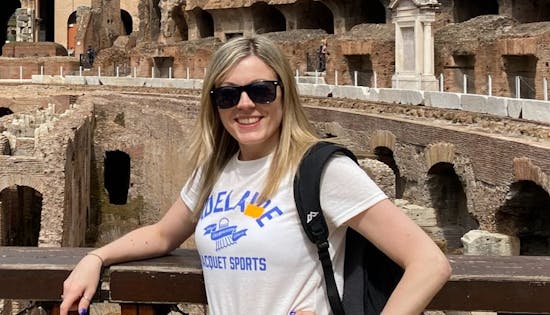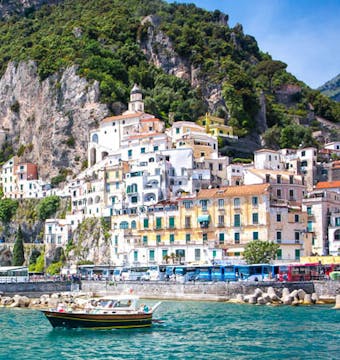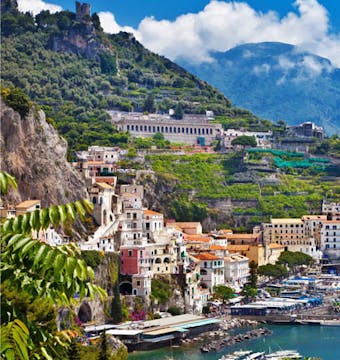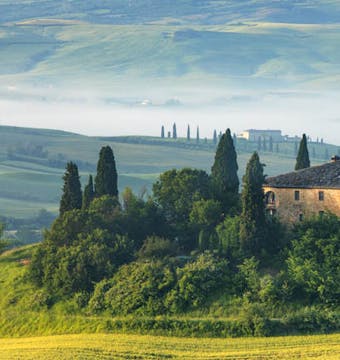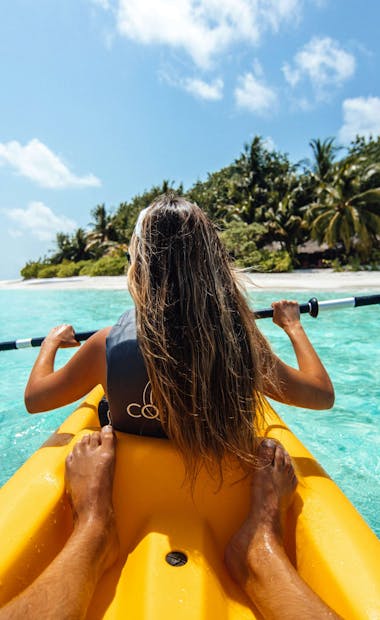
Italy Walking & Hiking Tours
Exploring Italy on foot. From the Amalfi Coast to Mont Blanc and more!
Popular tours
- Save1%
 View Tour
View TourExploring the Amalfi Coast - 7 Days
- Naples to Naples
- Age group: 12 - 100
- Max group size: 16
Was:£1,479From£1,464 - Save7%
 View Tour
View TourRome, Florence & Venice - 8 Days
- Rome to Rome
- Age group: 0 - 99
- Max group size: 40
Was:£1,675From£1,553 - Save18%
 View Tour
View TourParis to Rome: Picnics & Pizza - 7 Days
- Paris to Rome
- Age group: 18 - 39
- Max group size: 16
Was:£1,399From£1,150 - Save26%
 View Tour
View TourLocal Living Italy—Amalfi Coast Winter - 7 Days
- Naples to Naples
- Age group: 12 - 100
- Max group size: 16
Was:£1,429From£1,061 - Save16%
 View Tour
View TourHighlights of Northern Italy - 8 Days
- Rome to Venice
- Age group: 15 - 99
- Max group size: 12
Was:£2,080From£1,750 - Save11%
 View Tour
View TourLocal Living Italy—Sorrento - 7 Days
- Naples to Naples
- Age group: 12 - 100
- Max group size: 12
Was:£1,549From£1,380
Italy Walking & Hiking Tours
Welcome to the captivating world of multiday Walking Tours in Italy, where every step you take unveils the timeless beauty of this enchanting country. If you're a passionate wanderer with a penchant for exploration, our Italy Walking Tours will transport you to a realm of breathtaking landscapes, rich history, and unforgettable cultural experiences.
Immerse yourself in the footsteps of ancient civilizations as you traverse the cobblestone streets of Rome, the Eternal City. Marvel at the grandeur of the Colosseum, where gladiators once battled for glory, and let the mystical ruins of the Roman Forum ignite your imagination. Explore Vatican City, home to St. Peter's Basilica and the awe-inspiring Sistine Chapel, adorned with Michelangelo's masterpieces.
As you venture beyond the eternal allure of Rome, discover the romantic splendor of Florence, the birthplace of the Renaissance. Stroll along the banks of the Arno River, crossing the iconic Ponte Vecchio with its vibrant array of shops. Lose yourself amidst the artistic treasures of the Uffizi Gallery, where works by Botticelli, Leonardo da Vinci, and Michelangelo grace the walls.
Travel further into the Tuscan countryside, where rolling hills adorned with vineyards and olive groves await your exploration. Traverse the charming streets of Siena, renowned for its medieval architecture and the legendary Palio horse race. Indulge your senses in the picturesque landscapes of the Chianti region, where vineyards and wineries invite you to sample their world-class wines.
No Italy Walking Tour would be complete without a visit to the floating masterpiece that is Venice. Lose yourself in the intricate network of canals as you wander through the maze-like alleys and arched bridges. Immerse yourself in the beauty of St. Mark's Square, where the majestic St. Mark's Basilica and the grandeur of the Doge's Palace stand as testaments to Venice's golden era.
From the rugged cliffs of the Amalfi Coast to the idyllic villages of Cinque Terre, our Walking Tours of Italy will take you off the beaten path, unveiling hidden gems at every turn. Breathe in the fresh coastal air as you hike along picturesque trails, rewarded with breathtaking views of the azure Mediterranean Sea.
Experience the warmth of Italian hospitality as you savor authentic cuisine, from delectable pasta dishes to mouthwatering gelato. Engage with locals in bustling piazzas, where the aroma of freshly brewed espresso fills the air, and lively conversations add to the vibrant tapestry of Italian life.
Embark on an Italy Walking Tour and let the allure of this captivating country cast its spell on you. Discover the perfect blend of history, culture, and natural beauty as you journey through the centuries-old streets. With every step, you'll understand why Italy is a destination that must be experienced to be truly appreciated.
Join us on an unforgettable adventure and let the spirit of Italy captivate your soul. Lace up your walking shoes, pack your curiosity, and get ready to embark on an immersive journey through the heart and soul of Italy. Book your Italy Walking Tour today and create memories that will last a lifetime.
What are the best walking and hiking tours in Italy?
Italy is a haven for walking and hiking enthusiasts, offering a plethora of remarkable tours that cater to different interests and fitness levels. Here are some of the best walking and hiking tours in Italy:
Cinque Terre Coastal Trail: Explore the iconic Cinque Terre region, a UNESCO World Heritage Site, by walking along its scenic coastal trail. This trail connects five picturesque fishing villages nestled along the rugged cliffs of the Italian Riviera, offering breathtaking views of the Mediterranean Sea.
Amalfi Coast Path of the Gods: Discover the stunning Amalfi Coast on the Path of the Gods, a trail that winds its way through terraced vineyards, fragrant lemon groves, and charming villages. Marvel at the dramatic coastal landscapes and be rewarded with panoramic vistas of the azure sea.
Dolomites Alta Via Trails: Embark on an unforgettable hiking adventure in the Dolomites, a mountain range renowned for its jagged peaks and alpine beauty. The Alta Via trails offer a variety of routes, allowing you to explore this UNESCO World Heritage Site while immersing yourself in its awe-inspiring landscapes.
Tuscany's Via Francigena: Follow in the footsteps of medieval pilgrims along the Via Francigena, a historic route that stretches from the northern regions of Italy to Rome. Traverse rolling hills, vineyards, and charming villages as you soak in the beauty of the Tuscan countryside.
Sicily's Mount Etna: Conquer the mighty Mount Etna, Europe's largest active volcano, on a thrilling hiking tour. Ascend through lunar-like landscapes, explore ancient lava flows, and marvel at the breathtaking views from the summit, a truly unforgettable experience.
Umbria's Assisi Trail: Walk the scenic trails of Umbria, the "Green Heart of Italy," and discover the charming town of Assisi, the birthplace of St. Francis. Immerse yourself in the peaceful landscapes of olive groves, vineyards, and medieval hamlets as you follow the footsteps of this revered saint.
Sardinia's Supramonte: Delve into the wild beauty of Sardinia's Supramonte region, known for its rugged mountains, deep gorges, and hidden caves. Embark on challenging hikes, explore ancient archaeological sites, and soak in the untamed landscapes of this Mediterranean gem.
These are just a few examples of the incredible walking and hiking tours available in Italy. Whether you seek coastal panoramas, mountain vistas, or cultural immersion, Italy's diverse regions offer a multitude of options to satisfy your wanderlust and provide you with unforgettable experiences in nature.
What is the best time to visit Italy for a walking tour?
The best time to visit Italy for a walking tour depends on the specific region you plan to explore. Italy experiences a varied climate across its different regions, so it's essential to consider the weather conditions and the activities you wish to engage in during your walking tour. Here's a general guide to help you choose the best time for your visit:
Spring (April to June): Spring is an excellent time for walking tours in Italy, as the weather is mild and pleasant. The countryside is adorned with colorful blooms, and temperatures are comfortable for hiking. It's a great time to explore regions like Tuscany, Cinque Terre, and the Amalfi Coast.
Summer (July to August): Summer brings warm and sunny weather to Italy, making it an ideal time for walking tours in the higher altitudes or coastal areas. However, keep in mind that popular destinations can be crowded, especially in August when many Italians take their holidays. Consider regions like the Dolomites or northern Italy's lakes for refreshing hikes.
Autumn (September to November): Autumn is another fantastic season for walking tours in Italy. The temperatures begin to cool down, and the landscapes transform into vibrant hues of red, orange, and gold. It's an excellent time to explore regions like Umbria, Piedmont, and Sicily. The harvest season also offers the opportunity to indulge in local food and wine festivals.
Winter (December to February): While winter may not be the ideal time for extensive walking tours, Italy's milder regions like Sicily, Sardinia, and parts of southern Italy can still offer pleasant hiking conditions. The snow-capped mountains of the Dolomites also provide opportunities for snowshoeing and winter hikes.
It's important to note that specific regions within Italy may have their own microclimates and seasonal variations, so it's always advisable to check the weather forecast and plan accordingly. Additionally, it's wise to consider booking your walking tour in advance, especially during peak seasons, to secure accommodation and ensure availability.
Ultimately, the best time to visit Italy for a walking tour depends on your personal preferences, desired activities, and the specific region you wish to explore.
How Fit Do I Need To Be?
The required level of fitness for a walking tour in Italy can vary depending on the specific tour and the difficulty level of the trails involved. While some tours cater to all fitness levels and offer leisurely walks, others may involve more challenging hikes with steeper ascents and longer distances. It's essential to choose a walking tour that matches your fitness capabilities and hiking experience. Here are a few considerations:
Easy to Moderate Tours: These tours generally involve gentle walks on relatively flat terrain, with shorter distances and minimal elevation gain. They are suitable for individuals with a basic level of fitness and are accessible to most people, including beginners and those who prefer a more relaxed pace.
Moderate Tours: Moderate-level walking tours require a reasonable level of fitness and endurance. They may involve moderate ascents and descents, longer distances, and varied terrain. Regular walking or light hiking prior to the tour can help prepare you for these types of tours.
Challenging Tours: Challenging walking tours are designed for experienced hikers or individuals with a high level of fitness and endurance. They often include steep ascents and descents, longer distances, and rugged or mountainous terrain. These tours may require prior hiking experience and a good level of physical fitness.
Before embarking on a walking tour, it's advisable to consult with your tour operator or travel agency to understand the specific difficulty level and physical requirements of the tour. They can provide detailed information about the terrain, distances, elevation gain, and any specific fitness recommendations. It's also a good idea to gradually increase your fitness level before the tour by engaging in regular walking, hiking, or other cardiovascular activities.
During the tour, it's important to listen to your body, pace yourself, and take breaks as needed. Stay hydrated, wear comfortable and supportive footwear, and consider using walking poles for added stability. Additionally, be aware of any pre-existing medical conditions and consult with your healthcare provider if necessary.
By choosing a walking tour that aligns with your fitness level and adequately preparing physically, you can fully enjoy the beauty of Italy's landscapes while ensuring a safe and enjoyable experience.
How do the small group walking tours work?
Small group multiday walking tours typically involve a carefully curated itinerary where a group of travelers explores a particular region or trail on foot over the course of several days. Here's an overview of how these tours typically work:
Group Size: Small group walking tours typically consist of a limited number of participants, often ranging from 6 to 16 people. The small group size allows for a more personalized and intimate experience, fostering camaraderie among the travelers.
Itinerary and Duration: The tour operator designs a detailed itinerary that outlines the daily walking routes, points of interest, accommodations, meals, and any additional activities included in the tour. The duration of the tour can vary, usually ranging from 5 to 10 days, depending on the specific tour and region.
Professional Guides: Small group walking tours are led by knowledgeable and experienced guides who are familiar with the area's history, culture, and natural surroundings. The guides provide information about the sights, offer insights, ensure the group's safety, and may also assist with logistics and transportation.
Accommodations: Accommodations during the tour are pre-arranged by the tour operator. Depending on the tour, you may stay in a combination of charming hotels, guesthouses, agriturismos (farm stays), or traditional lodgings that reflect the local character and provide comfort after a day of walking.
Walking Routes and Difficulty: The tour itinerary includes planned walking routes that showcase the region's highlights and natural beauty. The routes may vary in length, difficulty, and terrain, catering to different fitness levels and preferences. Some tours offer options for shorter or longer walks on certain days, allowing participants to choose according to their capabilities and interests.
Luggage Transfer: Many small group walking tours provide luggage transfer services, where your main luggage is transported between accommodations, allowing you to walk with just a daypack containing essentials such as water, snacks, and personal items.
Group Dynamics and Support: Small group tours create a supportive and sociable environment where travelers share the experience together. Participants have the opportunity to connect with fellow walkers, exchange stories, and build lasting friendships. The guides are there to offer guidance, answer questions, and ensure everyone's well-being throughout the tour.
Meals and Culinary Experiences: Depending on the tour, meals may be included, ranging from breakfasts to some lunches and dinners. These meals often showcase local cuisine, providing an opportunity to savor regional specialties and indulge in authentic culinary experiences.
Small group multiday walking tours offer a balance of guided exploration, leisurely walks, cultural immersion, and opportunities to appreciate the natural beauty of the destination. They provide a well-structured and organized way to experience the region's highlights while enjoying the camaraderie of like-minded travelers and the expertise of experienced guides.
Are walking tours in Italy good for solo travellers?
Walking tours in Italy can be an excellent choice for solo travelers. They offer a great opportunity to explore Italy's stunning landscapes, immerse yourself in its rich culture, and meet like-minded individuals along the way. Here are a few reasons why walking tours in Italy are beneficial for solo travelers:
Group Environment: Joining a walking tour allows solo travelers to be part of a small group of fellow adventurers. This creates a supportive and sociable environment where you can make new friends, share experiences, and forge connections with people who share a similar love for travel and exploration.
Safety and Security: Traveling solo can sometimes raise concerns about safety. By joining a walking tour, you have the advantage of traveling with experienced guides who are familiar with the local environment, culture, and customs. They can provide guidance, ensure your safety during walks, and offer valuable insights to enhance your experience.
Organized Itineraries: Walking tours come with well-planned itineraries, taking the stress out of planning and logistics. You can enjoy the convenience of having accommodations, transportation, and activities arranged for you, allowing you to focus on the experience rather than the details.
Local Expertise: The guides on walking tours in Italy are often locals or individuals with extensive knowledge of the region. They can provide fascinating insights into the history, culture, and natural surroundings, enriching your understanding of the destinations you visit.
Shared Experiences: Walking tours foster a sense of camaraderie among the group, as you share memorable moments, hikes, and discoveries together. It's an opportunity to connect with fellow travelers, engage in conversations, and create lasting friendships.
Independence and Flexibility: While you travel within a group, you still have the flexibility to explore and enjoy some solo time. You can immerse yourself in the local culture, wander the streets, or take detours during free time. The structure of the walking tour provides a balance between guided activities and personal exploration.
No Single Supplement: Some walking tour operators offer accommodations on a twin-share basis, meaning you can be paired with another solo traveler of the same gender, eliminating the need to pay a single supplement fee.
When choosing a walking tour as a solo traveler, it's advisable to select tours that cater to a diverse range of ages and interests, ensuring a dynamic group atmosphere. Additionally, consider reading reviews and reaching out to the tour operator to gain a better understanding of the group dynamics and the type of solo travelers the tour attracts.
Embarking on a walking tour in Italy as a solo traveler opens doors to incredible experiences, cultural immersion, and the chance to connect with fellow adventurers. It's an opportunity to create cherished memories and embrace the freedom of exploration while feeling part of a supportive community.
Do I need a visa to travel to Italy?
The visa requirements for traveling to Italy depend on your nationality and the purpose and duration of your visit. Here are some general guidelines, but it's important to note that visa regulations can change, so it's recommended to check with the Italian embassy or consulate in your country for the most up-to-date information:
Schengen Visa: Italy is part of the Schengen Area, which allows for visa-free travel for citizens of many countries. If you are a citizen of a Schengen member country, you generally do not need a visa to enter Italy for tourism, business, or short stays. The maximum duration of stay is usually 90 days within a 180-day period.
Visa-Free Entry: Citizens of certain countries, including the United States, Canada, Australia, New Zealand, and many others, can enter Italy and stay for up to 90 days within a 180-day period for tourism or business purposes without a visa. However, it's important to ensure that your passport is valid for at least six months beyond your planned departure date.
Visa Required: If you are a citizen of a country that does not have visa-free entry to the Schengen Area, you will need to apply for a Schengen visa before traveling to Italy. The specific requirements, application process, and fees may vary depending on your country of residence and the purpose of your visit (e.g., tourism, business, study, etc.). It's recommended to contact the Italian embassy or consulate in your country to obtain the necessary information and guidance.
Long-Term Visas and Residence Permits: If you plan to stay in Italy for longer than 90 days or for purposes such as work, study, or joining family members, you may need to apply for a long-term visa or residence permit before traveling. These visas have specific requirements and application processes, and it's important to consult with the Italian embassy or consulate in your country for detailed information.
Remember that visa requirements can vary depending on your individual circumstances, so it's crucial to check the official visa requirements and regulations specific to your country of citizenship and the purpose and duration of your intended stay in Italy.
How does the rooming work on tours?
Small group tours in the Italy typically involve a set itinerary where you travel with a group of fellow travellers and a tour leader/guide. Accommodation arrangements vary depending on the specific tour you choose. Here are some common aspects of rooming arrangements on small group tours:
Shared Rooms: In order to promote camaraderie and facilitate interaction among group members, most tours arrange shared accommodation. This means you will be paired with another member of the same gender from the group to share a room. Roommates may sometimes change periodically throughout the tour.
Single Supplement: If you prefer to have your own room and privacy, you may have the option to pay a single supplement fee. This additional fee allows you to have your own room for the duration of the tour. However, please note that single supplements can vary in cost and availability.
Roommate Matching: Tour operators usually offer roommate matching services, where they try to pair you with a suitable roommate based on your preferences, such as age range. This can help ensure compatibility and a more enjoyable experience for all participants.
Rooming Preferences: When booking your small group tour, it's important to communicate your rooming preferences to the tour operator. If you have specific requirements or preferences, such as sharing with a friend or a specific roommate request, it's advisable to inform the tour operator during the booking process.
It's important to carefully read the tour details and inclusions provided by the tour operator to understand their specific rooming policies. If having your own room is a priority, make sure to inquire about the availability of single supplements and any associated costs before booking your tour.
Keep in mind that while sharing a room with a fellow traveller can be a great way to meet new people and build connections, having your own room provides more privacy and flexibility. Consider your preferences and the dynamics of the tour when deciding whether to opt for a shared room or pay for a single supplement.
Remember to communicate your needs and preferences clearly with the tour operator during the booking process to ensure a comfortable and enjoyable accommodation experience on your small group tour in the Italy.
What is the local currency in the Italy, and can I use credit cards?
The local currency in Italy is the Euro (€). It is widely accepted throughout the country, and you can easily obtain Euros from banks, ATMs, or currency exchange offices.
Credit cards are widely accepted in Italy, especially in larger cities, tourist areas, and establishments catering to international visitors. Major credit cards such as Visa, Mastercard, and American Express are commonly accepted in hotels, restaurants, shops, and other establishments.
However, it's always a good idea to carry some cash, especially for smaller establishments, local markets, or when traveling to more rural or remote areas where credit card acceptance may be limited. In such cases, having some Euros on hand will ensure that you can make payments without any issues.
When using credit cards in Italy, it's recommended to notify your bank or credit card company in advance of your travel plans to avoid any potential issues with card usage. Additionally, be aware of any foreign transaction fees or currency conversion charges that may apply when using your credit card abroad.
Overall, a combination of cash and credit cards will provide you with flexibility and convenience when traveling in Italy.
Will I require any vaccinations to travel to the Italy?
As of my knowledge cutoff in September 2021, there were no specific vaccination requirements for travelers entering Italy. However, it's always a good idea to stay updated on the latest travel health recommendations and consult with a healthcare professional or travel clinic well in advance of your trip to Italy.
While no mandatory vaccinations are required, it is advisable to ensure that routine vaccinations, such as measles-mumps-rubella (MMR), diphtheria-tetanus-pertussis, varicella (chickenpox), and influenza, are up to date. Additionally, it may be recommended to consider vaccinations for diseases like hepatitis A and B, depending on your individual circumstances, the duration of your stay, and the activities you plan to engage in while in Italy.
It's also a good practice to follow general health precautions while traveling, such as practicing good hygiene, washing hands regularly, and being mindful of food and water safety.
To obtain the most accurate and up-to-date information regarding vaccinations for travel to Italy, it is strongly recommended to consult with a healthcare professional or visit a travel health clinic. They will assess your specific health needs, take into account your medical history, and provide personalized recommendations based on the latest guidelines and any potential disease outbreaks or health concerns at the time of your travel.
What is the food like in the Italy?
The food in Italy is renowned worldwide for its incredible flavors, diversity, and emphasis on fresh, high-quality ingredients. Italian cuisine varies by region, but some characteristics remain consistent throughout the country:
Pasta and Pizza: Italy is famous for its pasta and pizza. From spaghetti and lasagna to ravioli and gnocchi, pasta dishes come in countless variations and are often accompanied by rich tomato-based or creamy sauces. Pizza, with its thin crust and various toppings, is a staple and can be found in pizzerias across the country.
Regional Specialties: Each region of Italy has its own culinary specialties. For example, in northern Italy, you'll find dishes like risotto, polenta, and hearty meat-based dishes. Central Italy is known for its rustic dishes like ribollita (vegetable and bread soup) and porchetta (roast pork). Southern Italy offers flavors of the Mediterranean with dishes like fresh seafood, caponata, and Neapolitan-style pizza.
Fresh Ingredients: Italian cuisine places great importance on using fresh, seasonal ingredients. From ripe tomatoes and aromatic basil to extra virgin olive oil and artisanal cheeses, the quality of the ingredients is central to the taste and success of Italian dishes.
Cheese and Charcuterie: Italy is a paradise for cheese and cured meat lovers. Parmigiano-Reggiano, mozzarella, gorgonzola, and pecorino are just a few of the many delicious cheeses that can be sampled. Similarly, Italian cured meats such as prosciutto, salami, and bresaola are prized for their distinct flavors.
Gelato and Desserts: Italy is famous for its gelato, a creamy and flavorful frozen treat. Gelato shops offer a wide variety of flavors made with fresh fruit, nuts, chocolate, and more. Additionally, Italy boasts a rich tradition of desserts, including tiramisu, cannoli, panna cotta, and sfogliatelle, to name just a few.
Espresso and Wine: Italians take their coffee seriously, and sipping an espresso or cappuccino is a daily ritual for many. Italy is also renowned for its wide variety of excellent wines, from robust reds like Chianti and Barolo to crisp whites like Pinot Grigio and Vernaccia di San Gimignano.
Italian cuisine is not only about the food itself but also about the dining experience. Italians appreciate leisurely meals, savoring each bite and enjoying the company of family and friends. It's common to find small local trattorias, family-run osterias, and lively street markets where you can indulge in authentic Italian flavors.
Exploring the culinary delights of Italy is an adventure in itself, offering a multitude of flavors, regional specialties, and gastronomic traditions that will delight any food enthusiast.
Can I drink the tap water in the Italy?
In general, tap water in Italy is safe to drink. The country has strict water quality regulations, and the water supply is well-maintained and regularly tested. Italian tap water is usually treated, chlorinated, and of good quality, meeting the standards set by the European Union.In cities and towns throughout Italy, it is common for locals to drink tap water without any issues. Restaurants, cafes, and hotels also serve tap water to customers unless specified otherwise.
However, it's important to note that there can be variations in taste and quality of tap water depending on the region. In some areas, the water may have a slightly different mineral content or taste compared to what you are accustomed to. It's a matter of personal preference whether you find the taste suitable for drinking.
If you are uncertain about the tap water quality or prefer bottled water, you can easily find bottled water in stores, supermarkets, and convenience shops throughout Italy. Bottled water is widely available and considered safe for drinking.
Ultimately, the decision to drink tap water or opt for bottled water is up to your personal preference. If you have any concerns or specific health conditions, it is advisable to consult with a healthcare professional for personalized advice.
Are there any cultural norms in the Italy I should follow?
When visiting Italy, it's always respectful to familiarize yourself with some of the cultural norms and customs of the country. While Italians are generally welcoming and understanding towards tourists, adhering to certain etiquette guidelines can help you navigate social situations smoothly. Here are some cultural norms to keep in mind:
Greetings and Personal Space: Italians generally greet each other with a handshake or a kiss on both cheeks, particularly among friends and acquaintances. However, when meeting someone for the first time, a handshake is more appropriate. Italians tend to stand closer to each other during conversations, so be mindful of personal space.
Dress Code: Italians take pride in their appearance and tend to dress well, especially in urban areas. While there are no strict dress codes, it is recommended to dress neatly and avoid wearing overly casual or revealing clothing when visiting religious sites or more formal establishments. Opt for smart-casual attire in most situations.
Dining Etiquette: When dining out, it's customary to greet restaurant staff with a friendly "buongiorno" or "buonasera" (good day or good evening). In restaurants, wait for the host or maître d' to assign you a table rather than seating yourself. Keep in mind that Italians generally eat dinner later in the evening, often around 8:00 PM or later. It's polite to wait for everyone at the table to be served before starting your meal and to keep your hands visible on the table.
Respect for Cultural Sites: Italy is home to numerous historic and religious sites. When visiting churches, cathedrals, museums, or other cultural landmarks, dress modestly and avoid loud conversations or disruptive behavior. Follow any rules or guidelines set by the site management regarding photography, touching artifacts, or other restrictions.
Tipping: In Italy, service charges are often included in the bill at restaurants. However, it is common to leave a small additional tip as a gesture of appreciation for good service. You can round up the bill or leave around 5-10% of the total as a tip. It's also customary to tip tour guides, taxi drivers, and hotel staff if you are satisfied with their service.
Language: While many Italians speak English, particularly in tourist areas, it's always appreciated to learn a few basic Italian phrases such as "hello" (ciao/buongiorno), "please" (per favore), and "thank you" (grazie). Making an effort to communicate in the local language is seen as a sign of respect and can enhance your interactions with locals.
Queuing: Italians may not always strictly adhere to queues, especially in crowded places or when boarding public transportation. Be prepared for a more fluid concept of queuing and exercise patience and flexibility in such situations.
By respecting these cultural norms and customs, you can show appreciation for Italian culture, enhance your interactions with locals, and have a more enjoyable and respectful experience during your visit to Italy.
What should I pack for a multiday walking tour in Italy?
Packing for a multiday walking tour in Italy requires careful consideration to ensure you have everything you need while keeping your luggage lightweight and manageable. Here are some essential items to consider packing:
Comfortable Walking Shoes: Invest in a sturdy pair of comfortable walking shoes or hiking boots. Make sure they are broken in before your trip to avoid blisters or discomfort.
Lightweight Clothing: Pack lightweight and breathable clothing suitable for walking and varying weather conditions. Opt for moisture-wicking fabrics that dry quickly. Include items such as t-shirts, long-sleeved shirts, convertible pants/shorts, hiking socks, and a waterproof jacket or windbreaker.
Layering Options: Since weather conditions can change throughout the day, layering is key. Pack a few lightweight sweaters or fleece jackets that you can easily add or remove as needed.
Rain Gear: Even during the drier months, it's wise to have a waterproof jacket or poncho and a small packable umbrella to protect you from unexpected rain showers.
Hat, Sunglasses, and Sunscreen: Protect yourself from the sun's rays by bringing a hat, sunglasses, and a high SPF sunscreen. The Italian sun can be intense, especially during the summer months.
Daypack: A lightweight and comfortable daypack is essential for carrying water, snacks, a camera, sunscreen, and other small items during your walks.
Water Bottle: Stay hydrated by carrying a reusable water bottle. Some walking tours may provide water along the way, but it's always good to have your own supply.
First Aid Kit: Pack a basic first aid kit with essentials such as band-aids, blister pads, pain relievers, antiseptic wipes, and any necessary personal medications.
Insect Repellent: Depending on the season and location, insect repellent may be necessary to protect yourself from mosquitoes and other insects.
Travel Adapter and Electronics: Don't forget to pack a travel adapter for charging your electronic devices. Additionally, bring a portable charger to keep your phone or camera powered during long walks.
Travel Documents: Carry a photocopy of your passport, travel insurance details, and any necessary travel documents. It's also a good idea to have digital copies stored securely on your phone or in the cloud.
Money and Wallet: Bring a secure wallet or money belt to keep your cash, credit cards, and identification safe while traveling.
Personal Toiletries: Pack travel-sized toiletries such as a toothbrush, toothpaste, shampoo, soap, and any other personal hygiene items you may need. Remember to adhere to airline regulations regarding liquids.
Travel Towel: A lightweight, quick-drying travel towel is useful for drying off after a refreshing swim or if towels are not provided at accommodations.
Snacks: Carry some lightweight snacks like energy bars, trail mix, or dried fruit to keep you fueled during long walks.
Remember to check the weather forecast for the specific regions you'll be visiting in Italy and adjust your packing list accordingly. Pack only what you truly need to keep your load light and manageable throughout your walking tour.
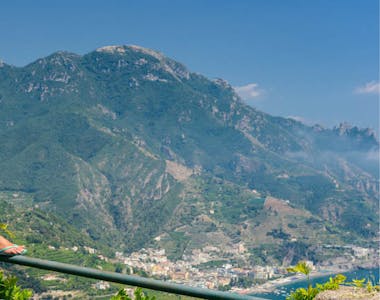

Italy Walking Tours Highlights
Book With Confidence
Monthly Payments
Spread the costs with no interest or additional fees
Best Price Guarantee
We won't be beaten on price. If you find this adventure at a lower price please get in touch!
Reserve now & pay later
Reserve your adventure today and pay later, free of charge
ATOL protected
Book with confidence
Hold your space today, for free
or book your trip with a deposit and then pay the rest in instalments.
Reserve your flights with us
Add flights to your booking and we'll take care of the rest. You'll get 24/7 support from our team & ATOL protection.
Speak to our experts
Call or email our expert team to find out more and help with ideas and planning.
